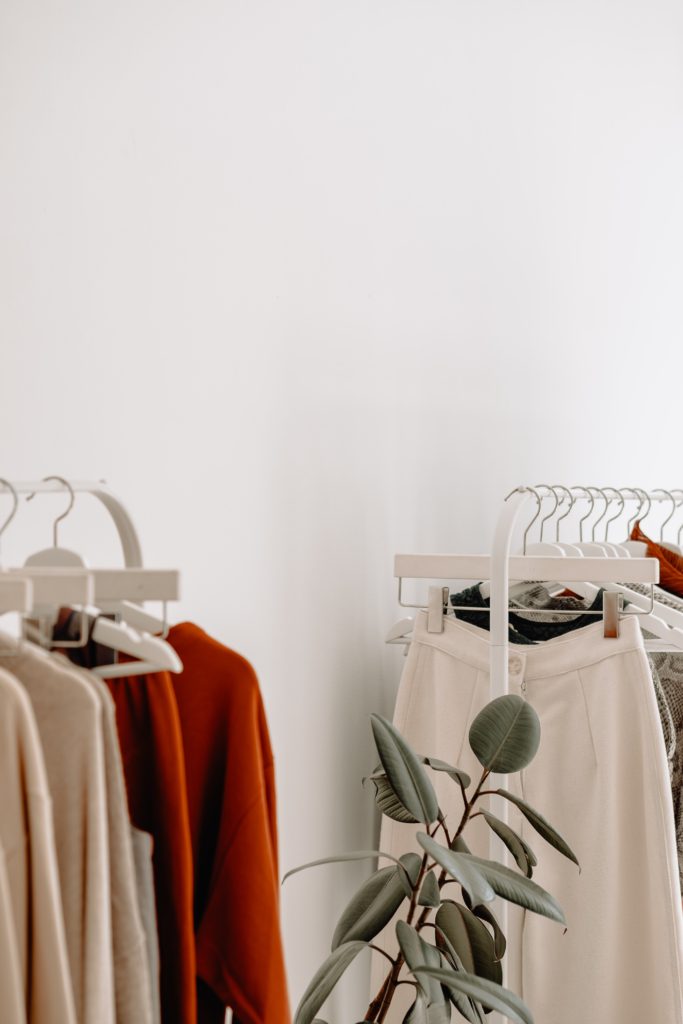Featured image: Thom Bradley on Unsplash
Fashion is an ever-growing and lucrative industry, with the area of fast fashion increasing substantially in recent years. Labels like PrettyLittleThing and Boohoo have gained notoriety as major fast fashion brands and have become a part of everyday women’s fashion. However, affordable shopping poses a threat to the ecosystem and brings up concerns about questionable production ethics. Yet, there is a remedy in the form of sustainable fashion, in which thrifting or second-hand purchasing are the main components and combatants of a throw-away society. I believe thrifting may not be a suitable competitor for fast fashion, as it ultimately increases waste products, adding to harm than good. I’ve refrained from both ways of shopping, particularly more so with fast fashion than thrifting, and here’s why.
I have become disenchanted by fashion in a way, seeing as there are so many subcultures within the space and with so many conceivable ways to dress as long as it seems cohesive. So, I stick to what looks good on me and what I find ‘fashionable’ and not what’s in season. I remain in the know when it comes to trends, but following them may be a steep price to pay environmentally and/or financially over time. Not only is fast fashion environmentally disruptive but, it also discredits original designers. I believe that prioritising durability and sustainability as well as limiting our minds from obsessing about what’s current or fad, will aid the process of the eco-friendly initiative. I am more thoughtful when I shop, only buying what I believe will be repeatedly worn.
My wardrobe, from clothes to shoes and accessories, has transitioned to buying from truly sustainable, luxury or curated one-off brands. These items are often pricier but will last substantially longer and, the likes of With Jéan and Pangaia are brands I have recently bought from. This way of shopping limits my closet clutter and how much I buy yearly, and I’m unbothered about reusing/recycling the same looks multiple times. I believe that there is pressure to wear clothing that is on-trend, or not wear clothing so often, especially with women’s fashion, as some see it as a lack of care or hygiene. I suppose that depends on how often you wear something. Though we may not always acknowledge it, there are subconscious stigmas or opinions formed against brands or dress styles and even over-wearing, making it harder to limit consumption and fast fashion exploits that.
The growth of eCommerce has accommodated fast fashion retailers but at the cost of increasing their carbon footprints. Oxfam estimates ‘2.1 tonnes of new clothing are bought every minute in the UK, and that each tonne produces 23.3 tonnes of carbon emissions.’ They add ’emissions are equivalent to driving a car 162,000 miles, or 6.5 times around the world’. I, like many, have taken a dip into the world of fast fashion, whether it was buying a basic white t-shirt, or dupe luxury brand pieces worn by favourite celebrities. However, the popularity and burgeoning dependence on these brands for cheap quick style fixes, is clearly becoming an increasing environmental and social problem.
Fast fashion adds to the detriment of nature and endorsements from celebrities also embolden these brands to continue scorching the earth. More often than not these fast fashion clothes are treated as waste, like single-use items, and the quality of these types of clothing can be considered built-in obsolescence. Some fast-fashion clothing is even donated to charity shops; however, this could be viewed the same as throwing them away. Sequentially, charity shops continue to be stocked with new or second-hand goods and the pile never seems to diminish, contributing to waste culture.
Though it is important to mention that some of these fast fashion brands have been working on ethically and environmentally friendly production. Princess Polly, for example, produces in small quantities based on consumer demand, Boohoo has also created sustainable lines. Despite some retailers producing ‘environmentally friendly’ products, buying from them still creates a demand for the product, and these brands oblige and supply. There is a limit to how much something can be considered eco-friendly when demand and supply are at play. There are also ethical and human rights concerns, with the initial lockdown, especially, bringing added scrutiny to this industry. With this shedding light on the ‘miserable conditions’ in fast fashion factories in the UK.
But these issues are not limited to just the UK, as most everyday products rely on Chinese manufacturing. Even though some brands, like Princess Polly, are more concerned with quality over quantity, it’s still cheaper to produce products in China than sourcing a production line in most western countries, despite CNN’s findings that China’s labour costs are only 4% cheaper than the US. The ethical and human rights concerns, when it comes to China, are that they’re said to be unlawfully detaining Uighurs. With human rights groups telling the Guardian: ‘virtually [the] entire’ fashion industry is complicit in Uighur forced labour. However, over-reliance on Chinese manufacturing or business seems to make organisations, like the International Criminal Court, reluctant to pursue investigations into the actions of the Chinese government.
When we look to the side of environmental consciousness, which largely pertains to thrifting culture, are these actions great enough to make a difference? The heightening of concerns over the man-made disintegration of the Earth, thanks to activists like Greta Thunberg, has, in turn, alerted many consumers to their own fashion habits. In response, a growing number of fashion enthusiasts are beginning to look towards thrifting or second-hand purchasing as a solution to throw-away society. These enthusiasts see thrifting as a way to stick it to consumerism and an attempt at preserving the environment. Although fast fashion and sustainable fashion are in opposite camps, there are some similarities when it comes to their environmental impact, one of which is waste.
Furthering my thoughts on thrifting, often times vintage or designer pieces are more ‘worthy’ of being thrifted. These items were produced with a ‘made-to-last’ mindset. There are many shops and online retailers that resell vintage and luxury pieces such as, Thrifted, Vestiaire Collective and even Depop. And with the purchase of these products, there is often a conscious effort to continue preserving the quality, taking fervent care of the clothing, which is otherwise unseen in fast fashion. Some sustainable brands are relatively ‘affordable’ like Pangaia or Weekday when looking into the fashion economy at large. Moving our money towards brands similar to these can be relied on to provide your clothing needs and a minimalistic approach could be adopted, which is a notion I have subscribed to. It’s hopeless to only see thrifting as a solution to sustainability when fast fashion continues to dominate sales.
Perhaps part of my evolving mindset is inspired by the minimalism of men’s lifestyles, though it may not be minimalism, but the fact that women are the target market for fashion investment. I sometimes forget how much of the market relies on the female gaze to buy, and how much it is shoved into every corner of our sight to be fashionably conscious or take into account appearance. This is speaking generally so may not apply to some. To be focused on what we wear and what others wear is unhealthy. The idea of being distinct but in season is more embedded with those enamoured with Instagram fashion and celebrity; a constant stimulus that inadvertently adds to the dilemma of making eco-friendly a fashion statement.
Clothes Aid notes, ‘Great Britons send 700,000 tonnes of clothing to recycling centres, textile banks, clothes collections and to charity each year’ and the Guardian has stated in the past 15 years, global clothing production has doubled to meet demand. Charity shops are now being stocked by fast fashion pieces. This is due to brands like PrettyLittleThing making statements like this where they, ‘believe style should be accessible to all, whatever your budget, as we deliver product inspired from the catwalk and the coolest muses of the moment’. The key phrase being ‘of the moment’, as not only the brands but also consumers, discontinue these items post-trend and the items may go to thrift stores, joining stockpiles of haphazard quality garments. This makes thrifting culture redundant as input seems to surpass output. Charity shops then become fashion graveyards, if stuff hasn’t gone to landfills or isn’t being hoarded.
Although, fast fashion feels necessary in areas that concern, for example, children to teen clothing, workwear, or those who cannot afford to buy pricier clothes. Basically, clothing that will likely have a short life span. This is where thrifting should counter that necessity as there are plenty of reusable garments in thrift stores. So, I don’t mean you should stop shopping at these types of stores. Instead, consider consuming less, reusing clothes, or upcycling clothing when possible, to combat the issue of clothing pileups. Donations can still be made to charities without needing something in return as that is the premise of buying from thrift shops. Only charities that specify clothing as a needed provision truly deserve the abundance of clothes.
A final note, garment care may also be something you think about when I mentioned luxury items earlier. In short, learn to handwash or invest in a steamer (you won’t regret it). To me, brands that take account of every part of the production process, though still somewhat in aid of capitalism, feel more sustainable than thrifting, and the level of quality and reusability makes fast fashion inessential. If people honestly take this to heart and purchase sparingly, they are then likely to make a difference in the sustainable cause. But sustainability is achievable only if we get out of the mindset of being trendy and stop making affordability the priority, as this should not stand in place of long-term use and environmental upkeep. Obviously, true sustainability in fashion would concern reusability or be in the form of harvesting our own fabric and making our own garments, but it’s too medieval of a solution in a world driven by convenience.






Leave a reply